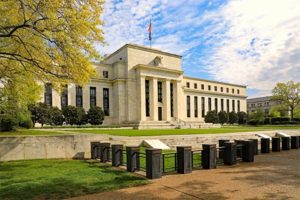Are Your Student Loans Federal or Private – Do You Know the Difference?
Did you get through college on federal loans or private loans?
If you are among the 67 percent of students who needed a loan to pay for a college education, could you answer these questions: Were your loans federal or private, and do you know the difference between the two?
A 2012 survey done by NERA Economic Consultants says that two-thirds of student loan borrowers like you do not.
About the same number of college students – 65 percent – admit they don’t understand certain aspects of their student loans, things such as terms, interest rates and the number of monthly payments.
In other words, a majority of the people who agreed to go into debt for a college degree didn’t learn much about the subject while they were in school. That could be a costly mistake.
There is a great deal of difference between federal and private student loans, and the obligation is on you to sift through the details. Just because you took out loans to fund your private-school education doesn’t mean your loans are all private. You might have a combination of both.
Financial aid offices can answer most questions, but you need to ask. Literature on the subject is confusing and often misleading, which could be why so many students can’t answer some of the most basic questions about their loans.
Finding out if your loans are federal or private is easy. The National Student Loan Data System (NSLDS) provides you with an online summary of the federal student loans you have. That list should include the amount owed and the repayment schedule, which is calculated over 10 years under the Standard Repayment Plan. If you are enrolled in a different repayment program, the schedule could be different.
Private loans are another story – and a harder one. There is no central database for private lenders. To get details about your loans, you must contact each lending institution on your own. If you don’t know what private institutions lent you money, contact your college’s financial aid office. It cashed the checks. It should know who wrote them.
The differences between federal loans and private loans are familiar: Federal loans are straightforward and efficient, while private loans are rigid and non-responsive. In this case, the government looks much better than the private sector.
Why Federal Loans Are Superior to Private Loans
Federal loans are funded and backed by the government, which borrows from itself at a pretty good rate for both sides. The interest rates on federal loans vary from a low of 3.4 percent (at least until July 1) for subsidized loans to 6.8 percent for unsubsidized student loans. The rate jumps to a high of 7.9 percent for parents taking out a loan to help their child.
You can have multiple loans. After graduation, these loans can also be consolidated into one payment so that you don’t have a fistful of bills to pay.
Federal student loans also may be eligible for certain forgiveness programs depending on your profession. One quick note: If you’re studying law and medicine, you cannot use federal loans after you finish your undergraduate studies. Instead, you can turn to private loans.
Types of federal loans include:
- Stafford Loans
- Perkins Loans
- PLUS Loans
- Direct Consolidation Loans
- Health Professions Student Loans
- Loans for Disadvantaged Students
- Primary Care Loans
- Nursing Student Loans
Students Pay More, Have Less Flexibility with Private Loans
Private loans are funded by banks and credit unions, state agencies or maybe even the school itself. Eligibility depends on your credit history rather than on your financial need. This means you do not need to complete a Free Application for Federal Student Aid (FAFSA) or any other federal applications.
When private lenders make money available, their goal is to make money for themselves. This, to them, is a financial investment. Not surprisingly, the interest rate these lenders charge is almost always higher than a comparable federal loan. The range for fixed-rate private loans can vary from 6.5 percent to 12 percent. The difference in the rate depends on the borrower’s credit score.
A bigger strike against private loans is the lack of flexibility when it comes time for you to repay them. Most private loans are set up on 10-year repayment schedules, with a fixed amount due every month. Depending on the amount you borrow, that fixed payment could be as low as $50 or well into the thousands each month. Consolidation options are available for private student loans, but are considerably less flexible than those available for federal student loans.
The Consumer Financial Protection Bureau, a new agency in the federal government, invited comments about student loan issues and received 2,000 complaints, most of them dealing with the private lender’s refusal to alter the repayment terms.
Federal loans, by contrast, offer you several options to relieve the pressure. The most useful one is loan consolidation, which folds all loans into one monthly payment, usually at an affordable rate.
Forbearance (stopping or reducing payments due to financial difficulties) and deferment (temporary suspension of payment for an agreed upon time), also are available on federal loans, although some private lenders also offer these extensions or temporary postponement of payment.
Some federal loans are similar to private loans in that they are repaid on a 10-year schedule. But other choices are available.
Some examples:
- Income based repayment (based on a percentage of earnings)
- Income contingent repayment (based on earnings, loan balance and size of family)
- Extended repayment (stretch repayment period from 10 to 25 years)
- Graduated repayment plan (starts low and increases every two years)
When the question of student loans comes up, surprise your audience with word that, in most cases, federal student loans provide better interest rates and more repayment options than anything private lenders offer.
That probably won’t be the answer they expect.


















